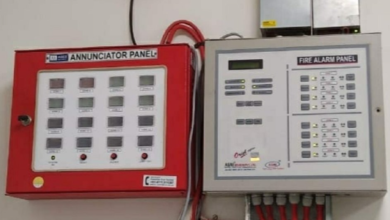
Efficient data capture and management are essential in today’s business environment. All types of businesses depend on precise and timely data to help make decisions, enhance workflows, and promote success. However, traditional Excel data entry techniques can be challenging, capable of mistakes, and reduce productivity. Using QR codes, a flexible and effective tool, can make Excel data capture easier. This article examines QR codes’ fundamental potential and how easily they work with Excel spreadsheets. Businesses can increase efficiency overall and speed up data-collecting procedures using QR codes. Let’s explore the world of QR codes and see how they can transform how data is captured in Excel.
The Power of QR Codes in Excel
Excel data collection and management are being revolutionized by QR codes, which have become a game-changing technology. These square-shaped codes are incredibly effective in making the process of storing, organizing, and accessing data simpler. Businesses may acquire a number of advantages that improve effectiveness, precision, and efficiency by integrating QR codes into Excel spreadsheets.
Benefits of using QR codes for data capture in Excel
There are numerous advantages to employing QR codes for data capturing in Excel. The first benefit of QR codes is that they deal with the necessity for manual data entry, lowering the possibility of human error and saving time.
The encoded data is instantaneously captured by scanning QR codes with a smartphone or barcode scanner, and the associated fields in Excel are filled with that data. This automated process improves data accuracy and frees up workers’ time to concentrate on more value-added tasks, ultimately boosting efficiency.
Seamless integration of QR codes with Excel spreadsheets
Excel spreadsheets and QR codes can work together seamlessly, a vital feature that improves data management and gathering. It is possible thanks to the innovative QR Code add-in for Excel. By making it easier to create and insert QR codes into cells, this effective feature improves data collecting and administration.
Businesses may easily connect QR codes to specific data, including product or customer information, with the help of the QR Code add-in. These QR codes scan quickly and automatically fill the correct fields, eliminating the need for manual data entry. Accuracy is ensured, precious time is saved, and real-time updates are possible thanks to this easy connection. Businesses can develop a simplified and effective system for easily gathering, organizing, and retrieving data by utilizing the QR Code add-in for Excel.
Implementing QR Codes in Excel
Implementing QR Codes in Excel is a straightforward process that offers many benefits for data capture and management. To start, users can generate QR code using various methods, such as an online QR code generator for Excel or specialized software.
Organizations can automate procedures, increase effectiveness, improve quality, and optimize their data-gathering process by incorporating QR codes in Excel. So, let’s understand how exactly one can generate and insert QR codes in Excel.
How to generate and insert QR codes in Excel?
Follow these easy steps to create and insert QR codes in Excel.
- Use specialized software or an online QR code generator to make the QR code first.
- Add the desired content to the QR code, such as text, URLs, or contact details.
- As an image file, save the QR code that was generated.
- Then, navigate to the relevant cell in your Excel spreadsheet where you want to enter the QR code.
- The saved QR code picture can be inserted by using the “Insert Picture” option.
The QR code will now appear in the selected cell, prepared to be scanned and connected to the appropriate spreadsheet data.
Exploring Excel features and add-ins that support QR code integration
Excel offers built-in options to generate, insert effortlessly, and format QR codes directly within cells. Users can customize the QR codes with relevant data, such as URLs, contact information, or product details, creating a seamless link between the code and associated information. With Excel’s formatting options, users can easily adjust the QR codes’ size, color, and appearance to suit their preferences or branding requirements.
Numerous add-ins are available that improve the QR code integration experience and Excel’s built-in features. These add-ins enhance Excel’s capabilities by giving users access to cutting-edge features and customization choices for using QR codes. For example, certain add-ins make it possible to create dynamic QR codes that may be updated with current information. Others provide batch production, allowing users to generate numerous QR codes simultaneously, saving time and energy. Additionally, some add-ins include functions like QR code scanning, decoding, and data extraction right within Excel, making it easier to collect and use QR code data.
Conclusion
In summary, QR codes can revolutionize data capture in Excel, simplifying the process and improving efficiency. Excel offers seamless integration for generating and inserting QR codes into spreadsheets, eliminating the need for manual data entry. Users can tailor QR codes to their specific needs and enhance functionality with customization options and add-ins. Exploring Excel’s features and add-ins for QR code integration allows businesses to streamline data capture, automate processes, and improve accuracy. By leveraging QR codes in Excel, organizations can easily optimize their data management workflows and make informed decisions.
Elen Mesropyan
Elen is an experienced web content and report writer at LinkyJuice.
She has a passion for creating engaging and informative articles. She mainly specializes in SEO-optimized content and IT-related articles. With a background in marketing, she always writes copy that leaves a lasting impact on readers.




